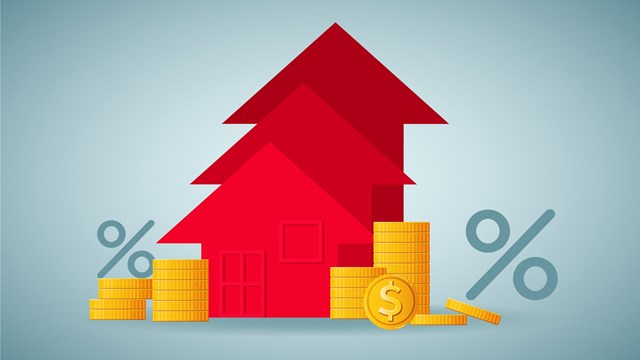In 1998, after receiving a "bill" for zero dollars and zero cents for the prior year's school taxes, some New York State property owners wrote checks to the government in that amount. They were convinced that a clerical error had been made, and felt compelled to raise attention to the matter. In fact, there was no error.
These property owners had a number of things in common: they had a primary residence in New York State, were over the age of 65 and had yearly household incomes that were below the statewide average. As a result, they were eligible for a tax abatement that, combined with other state and local tax relief, exempted them from all school taxes. Called STAR (a loose acronym for the School Tax Relief program), this program was proposed by Governor George E. Pataki in 1995 and enacted two years later.
Touted as the largest piece of tax relief legislation ever passed in New York State, the STAR program effectively phased out school taxes for residents of New York State by 2001 and saved them over $2 billion by the time the program was fully implemented. The school taxes formerly paid by resident taxpayers is now reimbursed by the state under STAR. The program's various incarnations apply to property owners who maintain a primary residence in New York State, and enhanced benefits are offered to low-income seniors. All New Yorkers who own and live in a one-, two, or three-family home, condominium or co-op apartment, mobile home or farm home are eligible.
The Basic STAR exemption, according to the state's Office of Real Property Services, is available for owner-occupied primary residences regardless of the owner's age or income. Basic STAR exempts the first $30,000 of the full value of a home from school property taxes.
For seniors, Enhanced STAR is available for residents age 65 and older whose yearly household incomes do not exceed the statewide maximum average. For 2003 assessment rolls, the combined applicants' income may not exceed $62,100. Enhanced STAR exempts the first $50,000 of the full value of a home from school taxes. To qualify at least one of the property owners or their siblings must be 65 years of age.
When the STAR program was proposed in 1995, it was necessary to determine the amount of exempt value a resident's home would be awarded under the program. To do this, the state compared the average home sale price in all 57 New York counties and New York City for the three years preceding the program's launch. The survey did not take co-ops and condos into consideration, however - though shareholders and unit owners were allowed the same deduction as the average homeowner, the value of their apartments was calculated as if they were rentals. Thus, even though the tax assessment of a co-op or condo is below the unit's actual market value, the state still awards the same dollar amount of tax-exempt value to the property as it would to a free-standing, single-family home - which translates into something of a windfall for co-op and condo owners.
Windfall or not, the primary issue surrounding the STAR abatement is raising awareness of the program and recognition of eligible participants. STAR may be the biggest tax cut in New York history, but it is not automatic for co-op owners. Written notification of the program is sent out periodically by the Department of Finance, based on mailing lists for annual municipal tax bills. Since co-ops pay taxes as a building, and not on an individual shareholder basis, cooperators may not know that they've got money coming back to them. Eligible shareholders must apply for STAR benefits, usually through their local assessor's office, so the first step in this process is to become aware that the program exists and understand what it is and whom it benefits.
In order to receive STAR benefits, property owners need to submit an eligibility application by January 5th for the preceding year. Applications can be requested online (http://home.nyc.gov/ html/dof/html/starex99.html), or by calling or writing the STAR Exemption office; New York City Department of Finance; 66 John Street, 13th Floor; New York, NY 10038; (212) 361-8215.
Applicants may be asked to provide proof of residency, vehicle and voter registration and/or other requested documentation along with their application, which is processed according to a fiscal year, coinciding with the property tax assessment roll.
"When we send homeowners their property assessment notices in early January, we try to include the STAR exemption if they qualify, so they have a general idea what their tax bill will look like in July," says Roberto Roman, spokesman for the New York City Department of Finance, which administers the STAR Program for city residents. He says that the most important thing for an eligible homeowner to keep in mind is that this program runs on a fiscal year, and the filing period is not negotiable.
"There are no retroactive benefits," he says. "If you miss the filing period you have to wait a whole cycle for the application to be processed."
Property owners in a co-op should contact members of their board to ensure that they are receiving the program benefits if eligible. Co-ops are eligible for the exemption, even if they are receiving other abatements, like J-51. Formerly, Mitchell-Lama co-ops were not eligible for STAR, but due to a recent revision of the state legislation, they will receive their first exemption beginning this month.
Once property owners receive Basic or Enhanced STAR benefits, they do not need to reapply; the Department of Finance sends out a re-certification questionnaire automatically each year to ensure continued eligibility. However, if a homeowner moves from one primary residence to another within the state, they must reapply; the eligibility will not automatically transfer.
Elizabeth Lyman, Director of state studies for the Citizen's Budget Commission (CBC), a nonprofit watchdog organization focused on New York's economy, says that New Yorkers have become increasingly aware of STAR benefits.
"There was a low participation initially," says Lyman. "But there has been an effort to increase awareness, and the city is doing much better."
Roman concurs. He says that in 1998 - the first year the STAR Program went into effect - his office sent out a mass mailing notifying every potentially eligible property owner in New York City, but it had an insignificant return in applicants.
"In 2001-2002, we started mailing applications to new owners of properties," says Roman. "Furthermore, all taxpayers who receive an assessment notice or a property tax bill receive STAR information."
And that complicates the issue for co-op shareholders, whose ownership of shares doesn't put them on property tax rolls, and thus makes it harder to get the word out to them about the program. Also, since co-op buildings are taxed as a single entity, co-op shareholders aren't individually exempted from paying school taxes under STAR; they enjoy STAR benefits in the form of decreased maintenance bills; their building's tax savings trickling down and costing them less each month - if the savings are passed on properly, that is. One criticism of the STAR program is its lack of policing mechanisms to guarantee that all eligible taxpayers - including co-op shareholders - get their full benefits. If co-op shareholders don't know about the program, they won't know if they're saving money on their monthly maintenance bills.
Another important difference between homeowners, condo unit owners and cooperative shareholders as far as STAR is concerned is the fact that sales of single-family houses and condominium units are matters of public record. Therefore, tax assessors are aware that real estate is changing hands, and notices for re-application to the STAR program are sent out to the principals. Not so with co-op sales. Since the sale of shares is a private matter not announced in any public forum, assessors have no way of knowing if someone has purchased a new co-op apartment, or has moved to a different co-op building with different tax assessments. It subsequently falls to building management to alert new shareholders of their tax benefit status, and remind them to check their monthly maintenance bills to make sure their STAR exemption has been properly deducted.
For its part, the Department of Finance is doing all it can to spread the word about STAR. "We promote STAR at every opportunity we have a chance to"“whether at public hearings, meetings or community functions," says Roman. "It's an ongoing process."
Additionally, the New York State Department of Taxation and Finance promotes STAR in television ads and in written materials, and the city's Department of Finance is planning another mass mailing later this year. Thanks to all its publicity and awareness-raising efforts, the Department of Finance receives about 40,000 new applications for STAR exemptions each year.
One of the primary criteria for STAR qualification - regardless of whether one gets basic or enhanced benefits - is area of primary residence. According to the Department of Finance, "The Basic STAR Exemption is available to all residential property owners, regardless of age or income, as long as they use the property as their primary residence." The term "primary residence," however, does not come with an ironclad definition - at least not insofar as the Department of Finance is concerned.
According to the department, "There is no one single factor that determines whether a property is your primary residence, but factors such as voting registration, vehicle registration, and length of time spent each year on the property may be relevant. We may ask you to provide proof of residency with the application. In addition, we may occasionally request proof of residency after the exemption has been granted, to verify that the property remains your primary residence."
In 2002, qualified seniors for enhanced STAR were people whose primary residence was in New York but many of them questioned exactly how city and state officials determined what factors were relevant in proving primary residence. How relevant is it if they spend as many (or more) months of the year in a warm weather climate like Florida as they do "at home" in New York?
Although each application is processed on a case-by-case basis, Roman says that senior citizens who spend the winter outside of New York State will not be rejected on that criterion alone. The important thing, he says, is that they do not attempt - underhandedly or not - to benefit from exemptions from two primary residences. Florida also has a homestead exemption, and because so many New Yorkers have dual residences there, the two states share information.
"We are also in contact with a number of other jurisdictions," says Roman - perhaps strategically keeping those other states a mystery. "If there is an incident where the homeowner is a dual resident, they have to pick one or the other; they can't have both."
The city's STAR Web site states that anyone who "misrepresents his or her primary residence, age or income may be subject to a $100 penalty, prohibited from receiving the STAR exemption for five years, forced to return up to three years of tax savings, or be subject to a criminal prosecution."
While most taxpayers welcome and appreciate any kind of relief from their financial burden - especially in these less-than-flush times - the STAR program is not without its detractors. While the program initially transferred the operating costs of K-12 education to the state - thereby substantially reducing property taxes, critics of the program say that in practice, school district spending is increasing, and that, combined with a state budget floundering in debt, makes STAR an easy target for criticism. Because taxpayers are getting relief from their taxes, however, it's hard to say whether critics of the program or the taxpayers will prevail.
One of those detractors is the CBC, according to Lyman. "The program operates with two purposes and both those purposes are not met." The CBC also believes that STAR is ineffective as a school aid program because the formulas that drive it are based on property wealth. Based on current assessment criteria, the districts that spend the most receive the most aid, which widens the already-great disparity in spending between the poorest and wealthiest districts. Furthermore, Lyman says that because schools have increased their spending and are absorbing partial benefits of STAR, it is not "dollar-for-dollar" effective as a tax reduction program.
Lyman also points to the fact that New York City residents do not get an equal share of the benefit. According to Lyman, "Of the $2.7 billion that is provided by the STAR program statewide, the city gets about $750 million. This gives New York City a 28 percent share in the program's benefits, as compared with its share of overall school aid, school enrollment, and population - respectively, about 37, 39, and 40 percent. By any kind of measure, 28 percent is a very low share."
The CBC recommends instead that the STAR funds go into a general school-aid coffer, instead of being allocated county-by-county, to allow the aid to flow in a more equitable manner.
As the economic landscape continues to be somewhat bleak, it's to everyone's benefit to look out for their own bottom line, and make sure that they're taking full advantage of legislation that benefits them as substantially as the STAR abatement. Condo owners have only to check their property tax bills to see the savings; co-op shareholders have to rely on their building management and their own initiative to see to it that they're receiving the full value of the exemption they're entitled to.
These days, every dollar counts, and the STAR abatement program works to put more disposable income back into co-op and condo owners' pockets.







Comments
Leave a Comment